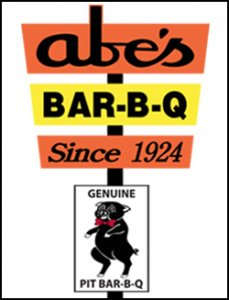
Lil John’s water source behind the levee. Photo by DB
By Lil John McKee
(Clarksdale, Mississippi)
Billy Howell, the Blogging Bohemian and editor-in-chief of www.deltabohemain.com, happens to be the writer’s best and oldest friend, which should indicate to the reader one of two possibilities: Howell is letting an otherwise untrained and incompetent writer drivel on about farming (the most searched-for word on all of Google, to be sure): either (1) because he owes me money, or (2) because he feels guilty about some egregious past discourtesy.
It happens to be the latter, for years ago Howell dropped your humble correspondent on his head as a child, resulting in a life of psychotic behavior and shattered dreams. Sadly, a side-effect of the head trauma has been an incessant torrent of dirty thoughts on nasty subjects, the dirtiest of which I want to cover today: – soil in the Mississippi Delta alluvium.
Now Howell may begrudge the fact that his web site includes an article on such a mundane subject matter, but it was the lick to the head that knocked the artist out of me and put the engineer in—the Blogging Bohemian must now deal with a guilty conscience, knowing that his best friend thinks, writes, and makes love like an engineer.
As for the more important matter at hand, Delta ag land parlance includes terms like “buckshot”, “sand-blow”, “rice land”, “cotton dirt”, “precision leveled” and “gumbo.” All are descriptive terms, which tend to describe both the relative clay/sand content of Delta soil and its elevation. Clay and sand are on opposite ends of the soil classification spectrum and exhibit totally different physical characteristics from a farming perspective.
• Sand
At some time in the past all Delta dirt was suspended sediment in water. Since floodwater travels in a non-uniform, turbulent manner, water velocity is higher in some areas than others. Because sand particles are much larger on a microscopic level than clay particles, it takes greater water velocity to keep sand suspended than it does clay. Think of what it would take to move a rock, which resembles one big sand particle.
The reason that sand is usually found closest to old waterways is that when floodwaters recede, they slow down; and slowing down causes heavy sand particles to drop out of suspension, usually very close to the fastest water in the center of the waterway. Each flood cycle repeats this process until eventually a waterway creates its own natural levee out of sand and silt near the edge of the waterway channel.
Eventually so much sand and silt accumulate that the waterway will choke itself out, causing the waterway to find a new, lower course. Land left behind in the process is often called “sandy land” or cotton land. Its high sand content and non-cohesive nature allow water and air to infiltrate readily, traits desirable for cotton cultivation.
As a result of this natural levee-building phenomenon, the highest land in the Delta is usually found near the Mississippi River, a fact that seems counterintuitive. Throughout history the Mississippi River has breached natural or manmade levees (read Rising Tide, by John Barry – a wonderful book on the Great Flood of 1927), and those breaches are sites where water velocity can be extremely high. Since very high velocity water carries very large particles, breach sites often exhibit a soil type called “crevasse” which consists of coarse sand known in the local vernacular as a “sand blow”. Soil of this type is excessively drained internally (does not hold water at all) and is not suitable for row-crop agriculture.
• Clay
Clay consists of tiny particles, which can remain in suspension for eons. Therefore, places where clay is predominant are usually places where water has stood for long periods of time, and these are usually low places. “Bottoms” are usually clay soil, and they are suitable for rice production because they hold water well.
Clay soils can be very homogeneous and therefore conducive to land leveling. Clay is a cohesive soil, meaning that the tiny particles stick together tightly. Water does not penetrate well, which is why a rice paddy does not lose its water as much on clay soil. If a clay soil is not drained well on the surface, plants can become waterlogged and produce poorly. When clay dries it shrinks and cracks open, a fact that is the bane to many a house foundation.
However, clay soils that have been land-leveled or land-formed drain well on the surface and are some of the most productive and profitable soils in the Delta. “Precision-leveled” land is land that has been graded on top so that the surface is a plane. The idea is that there are no depressions in the field where water can pool and damage a crop by water logging.
Clay is sometimes called buckshot because when it dries it cracks and forms little particles like BB’s. Also, it is called gumbo because when it is fairly wet it assumes a sticky consistency like gumbo.
Usually, the clay soils are in the lowest part of the Delta, which generally is located away from the Mississippi River. This is not always true, as the Big River has shifted its course many times over history. Nowadays, the Corps of Engineers is responsible for maintaining the channel in its current location, an effort that is not natural but essential for commerce. For an excellent history of the fight to channelize the river, read Rising Tide.
In describing the difference between sand and clay to my children, I phrase it this way, “If you throw a dirt clod at someone, and it disintegrates like a dry snowball when it hits them, it is sand. If it hits them like a wet snowball and sends them to the emergency room, it is clay.”
Big Bohemian, if that dirty stuff doesn’t titillate the un-tittillatible, then will you let me try to write about oil viscosity?
COMMENTS, anyone?






As a New Yorker who actually has spent time thinking about the different types of soil in the Delta I am thrilled that John has finally shed some light into this very murky topic.
“…egregious…”?
“titillate the un-tittillable…”sp??
“…alluvium…”?
My God John you’re becoming a wordsmith! Next will be be a coffee-table edition of your haikus. This Howell fellow is infecting us all with his psychotic ramblings and enthusiastic verbiage (See! He’s got me doing it!). The Rising Tide book is one of my all-time favorites. I can’t believe how Hollywood hasn’t made it into an epic movie yet. Now THAT would bring some money down there with perhaps yourself as a consultant as resident expert? Get Billy on this. He needs direction…
–A.
Magdalena, thanks; I am glad I could illuminate something. Come back and visit, because despite them New York leanings, you are a Deltan now.
Alex, I think it has to do with Mrs. Oakman’s English class – I keep having flashbacks that I am walking into her class for the final exam, except that I’m 50 years old and I haven’t studied for 32 of them. It also may have something to do with hanging around Little Round Man – I think you are right on there. If they make the movie, I want to play the Eads engineer guy, and Howell can play LeRoy Percy.
Take care, JM
The waterways that deposit the sand and building natural levees by doing so are also known as “perched streams” (A stream whose surface level is above that of the water table and that is separated from underlying groundwater by an impermeable bed in the zone of aeration). Rising Tide should be required reading in the schools.
Dear John,
I haven’t heard back from you since I sent you that pocket thesaurus. After our long chat about Billy using big words that you couldn’t understand I felt compelled to get you one. I hope you are making good use of it.
Regards,
LD
Mr W&L, You got clay and sand down, but can you explain Delta buckshot soil. Does it really exist or is it just an excuse farmers use when their crops aren’t as good as their neighbors on Rich Sandy Soil?
As an ex Deltan I too spend time thinking about Delta dirt – would love to hear from anyone re slang names for the various types, i.e., Black Gold, and of course, Rising Tide should be required reading.
We have no idea, James. Good luck with those bananas.
How did you find The Delta Bohemian?
Found your site while searching for a definition of buckshot mud. Soon to celebrate the fiftieth year of my transplantation. Learning some new things. Accepting some old. Interesting.
Thanks for the comment, Steve. Life in the Mississippi Delta. You can’t beat it!
I’ve heard of Mississippi delta sandy soil refered to as “ice cream” from old times near Greenville. Buckshot is real and all over the White river drainage in Arkansas.
I recall my father referring to the best soil as “ice cream” too. Could be partly why I LOVE ice cream to this day. I especially love Sweet Magnolia’s ice cream/gelato. It’s based out of Clarksdale. Check it out. https://www.sweetmagnoliagelato.com/
I lived in West Memphis Arkansas for 50 years, and i know exactly what gumbo is. I played football on it. You might as well play on concrete. In the summer…when it cracks open, you can stick a water hose in it and never have a puddle…(i tried many times as a kid)..sure makes good dirt clods though.